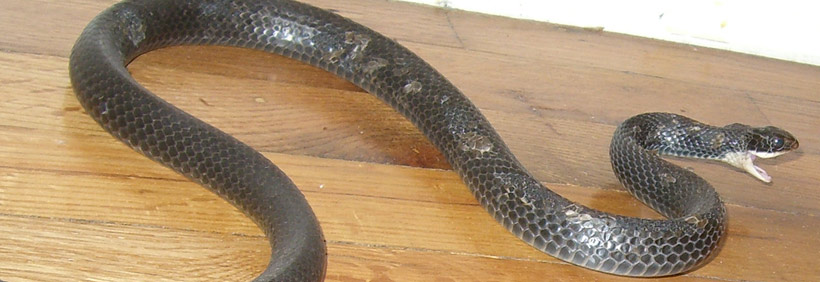Most animals that
you come across have some means of communication
with one another. Whether that communication is
intended for animals of the same species, for
other animals, or for both, is dependent upon
the kind of animal in the vocalization that it
is able to use.

For example, most of us are quite familiar with
how a cat communicates. When the cat meows it
can mean anything from being hungry, to being
playful, to being upset about something. Its
hisses are intended to warn any approaching
animal that the cat is upset and will take
aggressive action to protect itself. Most are
familiar with this kind of communication from
these animals. It is well recognized, and well
understood what the different sounds usually
mean. But what about a snake ? How do snakes
communicate, not only with one another but with
other kinds of animals? Is this even possible?
The answer may surprise you a little bit.
Learn
How big do snakes get?
First of all, snakes do not make sounds like you
would find in many other kinds of animals. In
fact, this is one of the common aspects of
reptiles in general. Very few reptiles make
vocalization sounds to communicate with others
in their species or with other kinds of animals.
They use alternative means to be able to
communicate, and the snake is no different.
Before explaining this, it is important to
understand that snakes are solitary animals.
Cats, dogs, and many other kinds of animals live
in and around others in their species. This
makes it so that communication is essential in
being able to handle the day-to-day life for
these animals. This is not the case for the
snake.
A snake lives a solitary life, only coming
across other snakes by accident or when
preparing for battle. They are not looking to
communicate with other kinds of animals, so
having a means of vocalization is unimportant.
However, snakes do communicate with one another.
This is done through a very well developed
system of pheromones, called a veronassal
system. This system allows the snake to leave
pheromones, chemicals, as clues for other snakes
within the area. The primary purpose of these
chemicals is to inform potential mates that the
snake is ready for breeding. This continues the
reproduction of snakes within the area by giving
a means of communication between the male and
the females.
Find out more about
how snakes smell their environment.
For males, this also becomes a warning to other
males in the area that one snake has established
its territory for females that may enter within
the region. They know to stay away from there or
to be prepared to battle.
For most other kinds of animals, the chemicals
are not detectable to them. This means that they
are not given a warning that a snake is in the
area.
Read more about
Snake Control in my educational articles. My years of experience means I can give you the best advice about how to
Identify Snakes and, if necessary,
Kill Snakes. Find out whether or not snakes are
dangerous to cats, dogs, or other pets, how they
move, if they come out in the
rain or at
night, and if they live in
holes. I can answer if snakes
feel pain and if they
run out of venom.
Find, too, my lists of common and venomous snakes around the country.
Learn the most common snakes of
Pennsylvania and
North Carolina in the east. In the central part of the country, find the most common snakes of
Illinois,
Ohio. In the south, learn the common snakes of
Georgia and
Florida, and in the west the most common snakes of
Arizona and
California.
Learn more about the ones you have to watch out - the venomous snakes of
Georgia,
Florida, and
California.